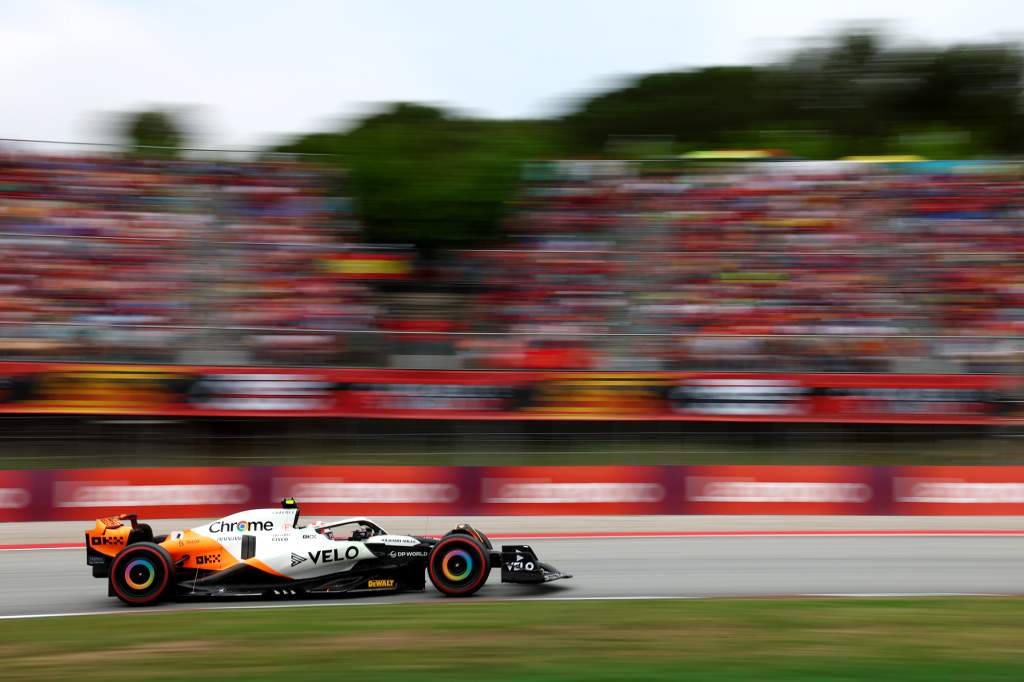Up Next

There was nothing surprising about Max Verstappen being on a resounding pole position around Barcelona. There wasn’t even much of a surprise that his advantage at the Spanish Grand Prix should be way bigger than at any previous race so far in the 2023 Formula 1 season, given the way the long, fast corners of the track really allow the Red Bull RB19 to show its best stuff.
But there was plenty of surprise behind him, not least that of Lando Norris, third-fastest for McLaren, only half-a-tenth of a second off the front row.
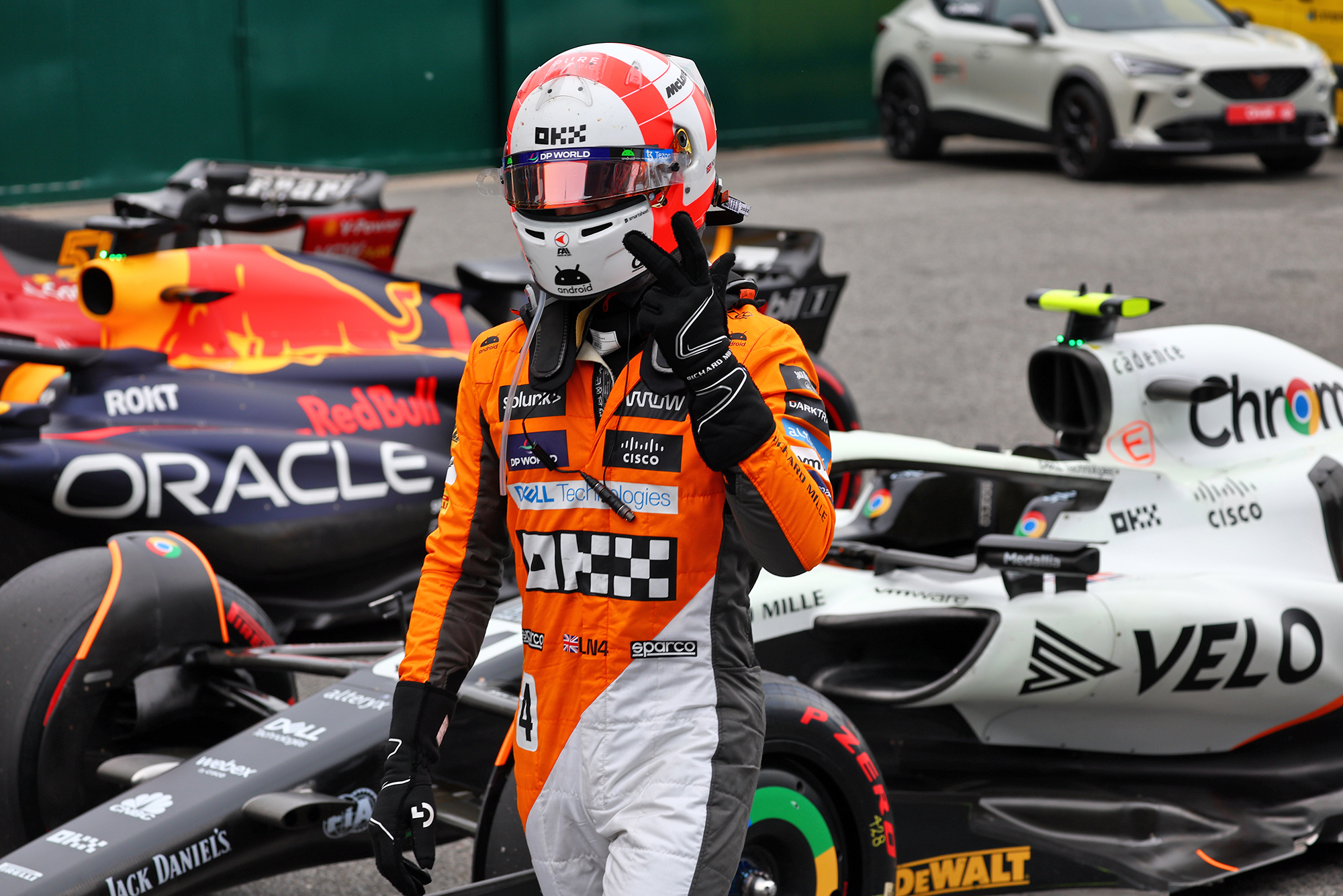
Coming into this weekend the McLaren’s qualifying average – expressed as a percentage of pole – was just the seventh-fastest of the 10 teams, even marginally behind Williams. Yet here it was only just losing out to Ferrari for the status of second-fastest car, with Norris second in both Q1 and Q2.
On a weekend when both Ferrari and Mercedes were running their heavily-upgraded cars, Norris was quite clear that this burst of form was not about any development boost from his team.
“It’s pretty much the same car we’ve had since Baku,” he emphasised. “We didn’t change anything coming here.”
Although his team-mate Oscar Piastri qualified only 10th, this came after an error in his final sector. Had he just repeated his Q2 time he’d have been seventh.
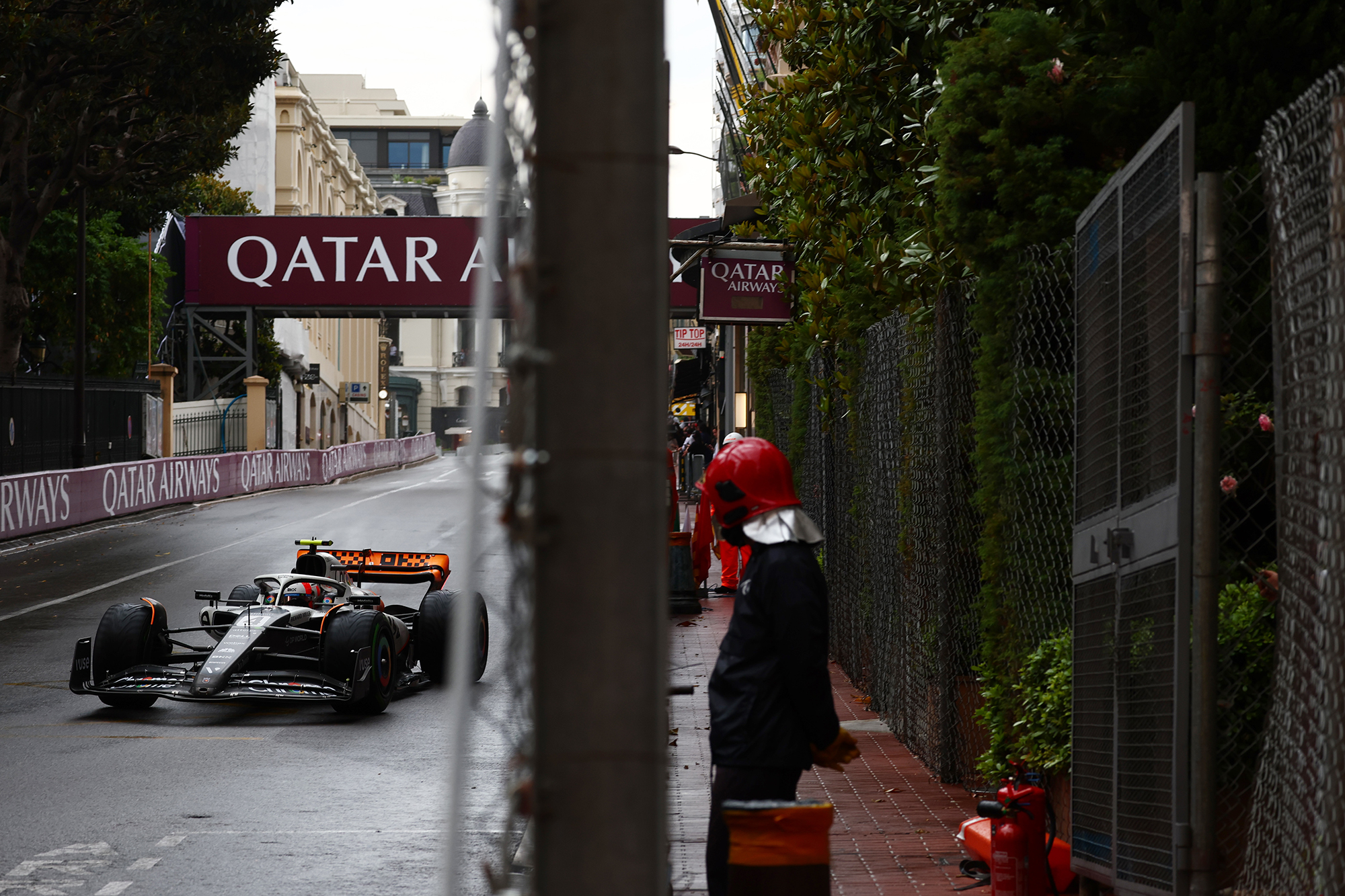
Chronologically, this performance comes directly after Norris and Piastri were the fastest cars on track in the late, wet stages of Monaco. Therein lies a vital clue. The McLaren generates heat in its front tyres very effectively, possibly better than any other car and in cool or damp conditions this becomes a super-valuable trait. So much so, it can even make a car quicker than an aerodynamically superior machine.
The track conditions at Barcelona, under an overcast sky which had coated the track in rain in FP3, were very cool, with a track temperature of just 24-25-degrees C.
This played its part in the difficulties of George Russell and Sergio Perez in cars which do not switch on those fronts as easily. If the tyres are not in the window you cannot even begin to compete with someone in the same car who has somehow managed to get those temperatures.
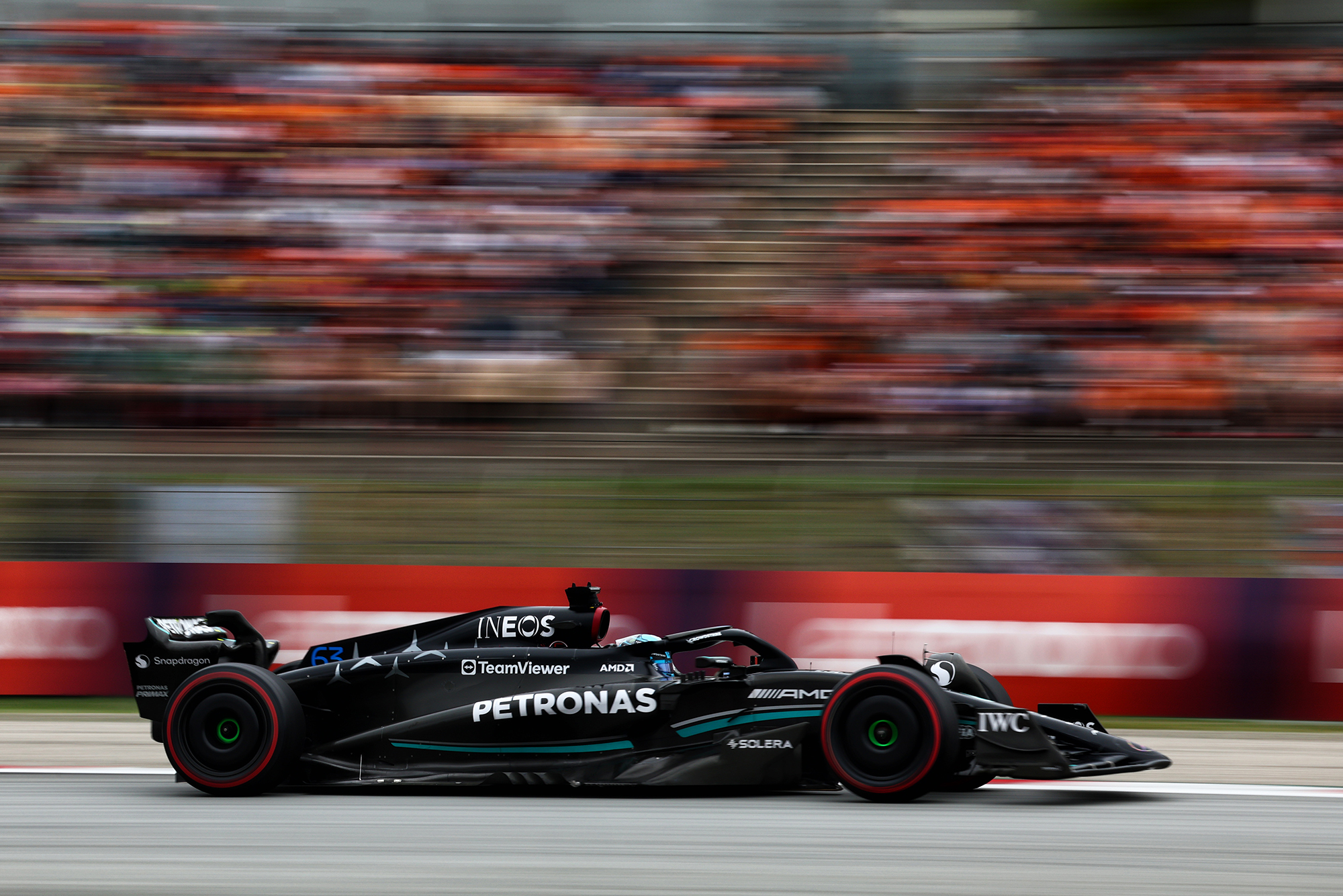
The same trait that had Russell so far off Mercedes team-mate Lewis Hamilton here was why those positions were reversed a couple of races ago in Miami, when Hamilton being baulked on his prep lap prevented him getting past that crucial threshold at which the tyres suddenly switch on. It isn’t a progressive thing, but almost binary. The wrong side of that temperature threshold you are nowhere. The right side, you’re good.
Perez made things yet-more difficult for himself of course with his run through the Turn 5 gravel, which was pure car placement error under braking. But his general struggle for pace had a lot to do with the Red Bull’s tyre temperatures.
“The tyres are a crucial factor,” confirmed Christian Horner. “We checked all the aero loadings after Q1. The support we have back at the factory, they are able to look at the analysis between the two cars. Are the two cars [Perez’s and Verstappen’s] generating the same amount of downforce? And they were like-for-like…
“I think it was just about getting the tyres in the window because we know Checo is not [really] that far off. He just couldn’t get the tyres working today.”
Russell was making similar comments after also failing to make Q3, over 0.5s slower than Hamilton.
“Just horrendous bouncing and I couldn’t get the tyres to work,” he summarised.
The McLaren drivers had no such trouble getting to that crucial threshold. But why does a tyre behave like this? What is happening around that threshold? Tyre engineers call it the vitreous transition.
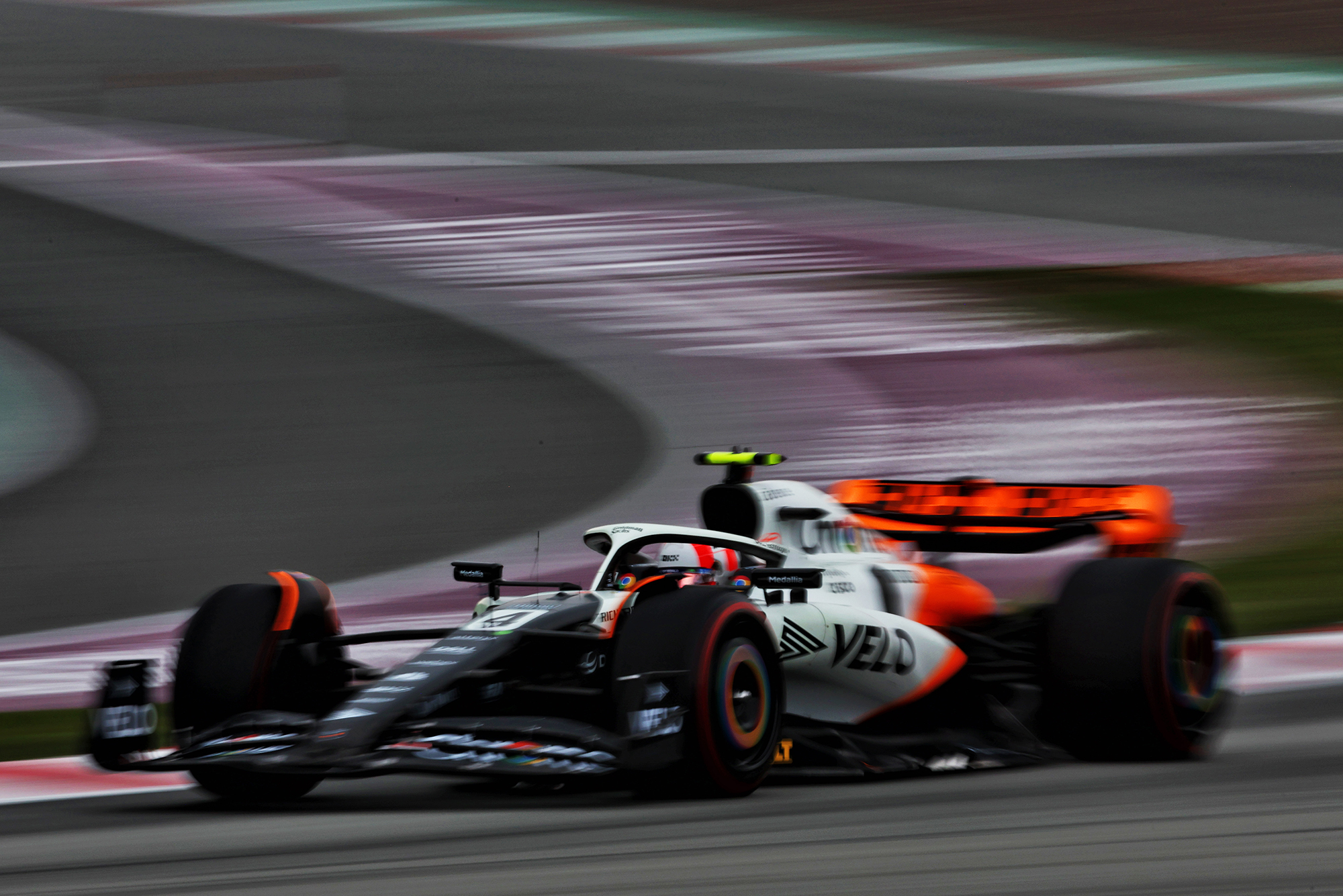
There are two mechanisms to a tyre’s grip – mechanical and chemical. The former refers to how the tyre’s structure physically grabs the surface and withstands the loads the resultant forces put upon its structure. The latter refers to the level of chemical bonding of the tyre’s tread with the surface of the track. Tyres contain elastomers, which are substances with very large molecules which give the tyre its elastic properties. Those molecules link together at the right temperature to give the tyre a very high resistance to load – ie they grip. Below that temperature, they do not have the same ability to join without snapping and the tyre’s grip is vastly reduced.
With little or no chemical bonding going on, the tyre’s structure does not get loaded up and the central core of the tyre remains rigid and inelastic. But as soon as the chemical bonding begins happening (ie the point of vitreous transition), the loads begin to go through the structure and it acquires the elasticity which allows it to oppose the cornering forces and to grip, as it tries to pull itself back into shape against the loads, rather than simply giving up and sliding.
If the car is not feeding the loads into the tyre in a way which allows that point of vitreous transition to be reached, it will be nowhere, regardless of how much downforce is being fed through them. Downforce helps, but so also does the dynamic weight distribution of the car, the suspension geometry, the way the driver is driving.
Each compound of tyre is designed to work in a different temperature window. The softer compounds generally work better on cooler track temperatures, the harder ones in hotter temperatures. If the track is cooler than the ideal for that compound, then that vitreous transition can suddenly become difficult to reach. Barcelona might have been expected to have a track temperature of 40-deg C. Instead, we had 24-25-deg C.
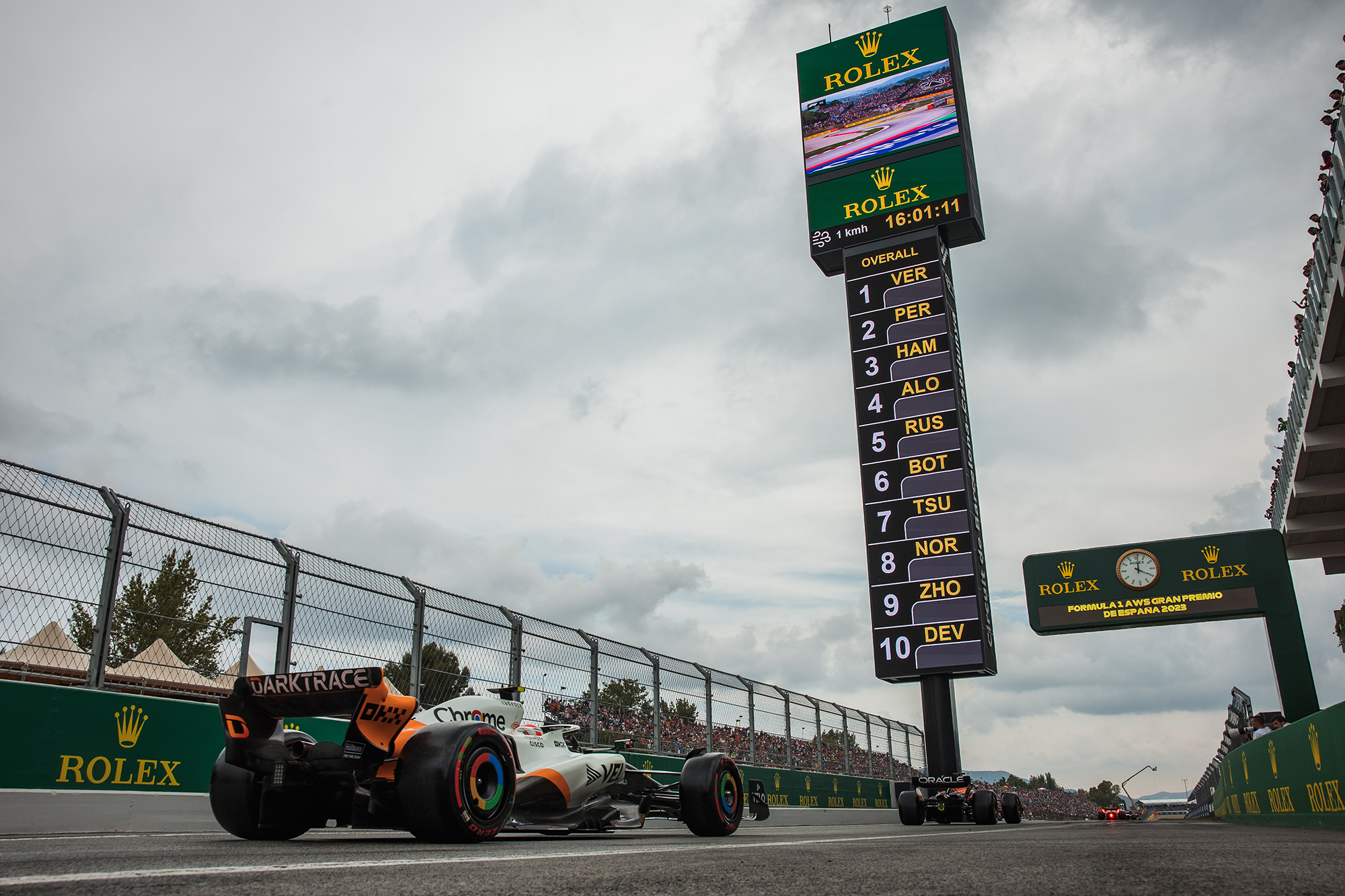
“Cooler temperatures always seem to suit us,” was Norris’s summary. But behind that statement is the way the McLaren works its tyres. Red Bull has this season had some difficulty in generating good front tyre temperatures by the start of a qualifying lap, likely because of the relative lack of dive and pitch given by its anti-dive front/anti-squat rear suspension. But the combination of the long, fast corners and Verstappen’s commitment to them allowed him to comfortably reach that threshold this weekend. Unlike Perez.
It’s not only that, however. The McLaren works very well in high-speed corners and the Circuit de Catalunya rewards that very heavily. Almost all the McLaren’s usual deficit to the top cars comes in low-speed or aero efficiency parts of track.
But it’s not even just that the McLaren generates good tyre temps and is good around demanding long high-speed sweeps. It’s also that Norris is exceptionally good. Time without number now over the last few years he has put various sub-standard McLarens well above their rightful grid position. As soon as circumstances align, he is always right there, almost without fail, underlying his credentials as a serial grand prix winner in the right car. Recall his pole in the cool of Sochi 2021?
It’s a trait Verstappen was referring to after being asked if he was surprised at the order behind him.
“Yes, surprised that Lando is up there… no, sorry. I mean surprised that McLaren is up there. I’m never surprised when Lando does something.”
Verstappen and Hamilton are the two fellow drivers who regularly name check Norris as one of the elite.
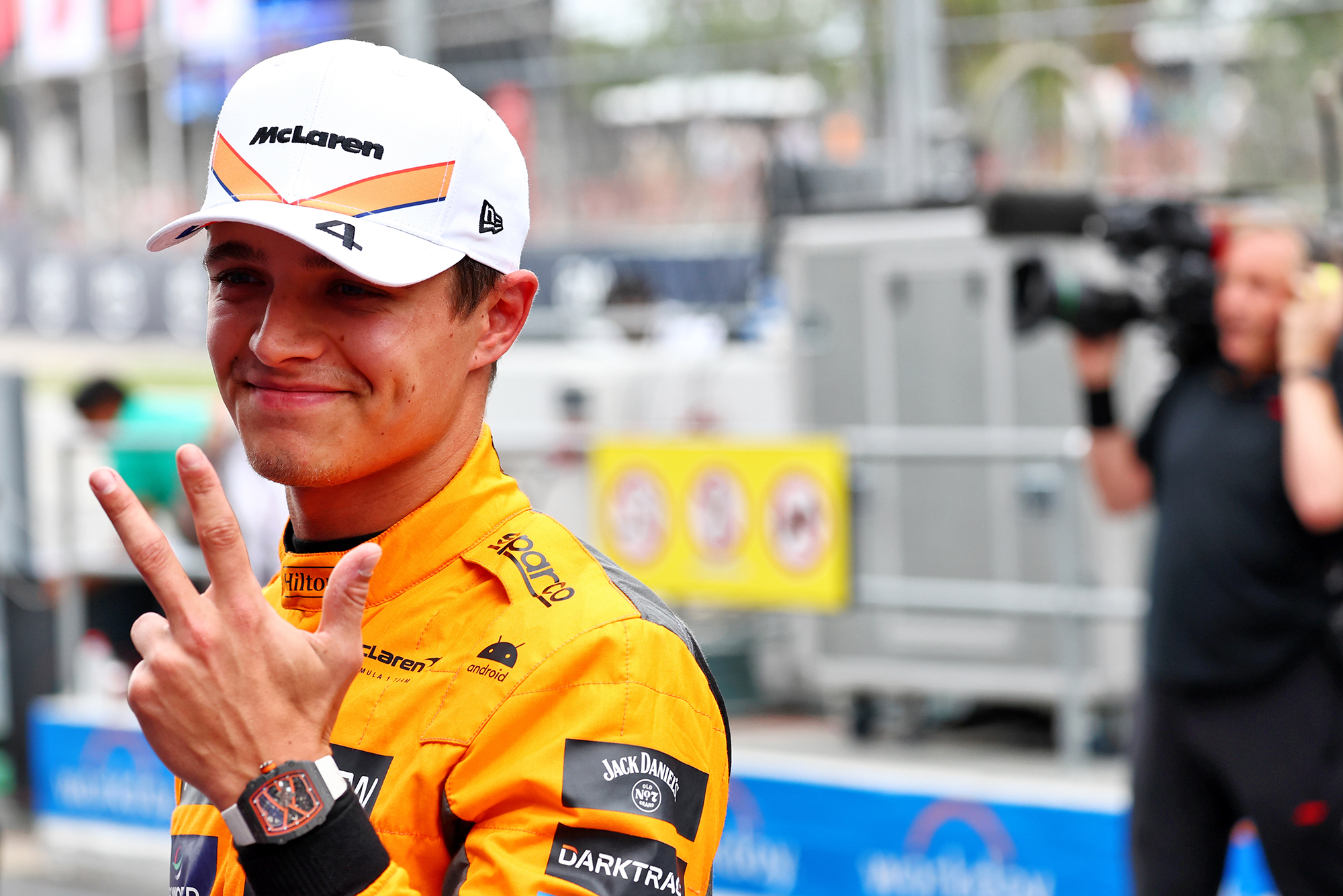
Join all those things together, and we get the sort of combination which can spring a surprise like Norris’s here.
It’s circumstance-specific rather than an indication that McLaren has now joined the Aston Martin-Ferrari-Mercedes group, something that both Norris and his team boss seem more than aware of.
Asked how optimistic he was for the race, Norris replied: “Not very. Not unless it rains.” Because as soon as the cars which struggled for tyre temperature get a few laps to acquire that temperature, they become intrinsically faster cars once more.
“Let’s not get too excited,” cautions Zak Brown. “Let’s see the race pace.”


